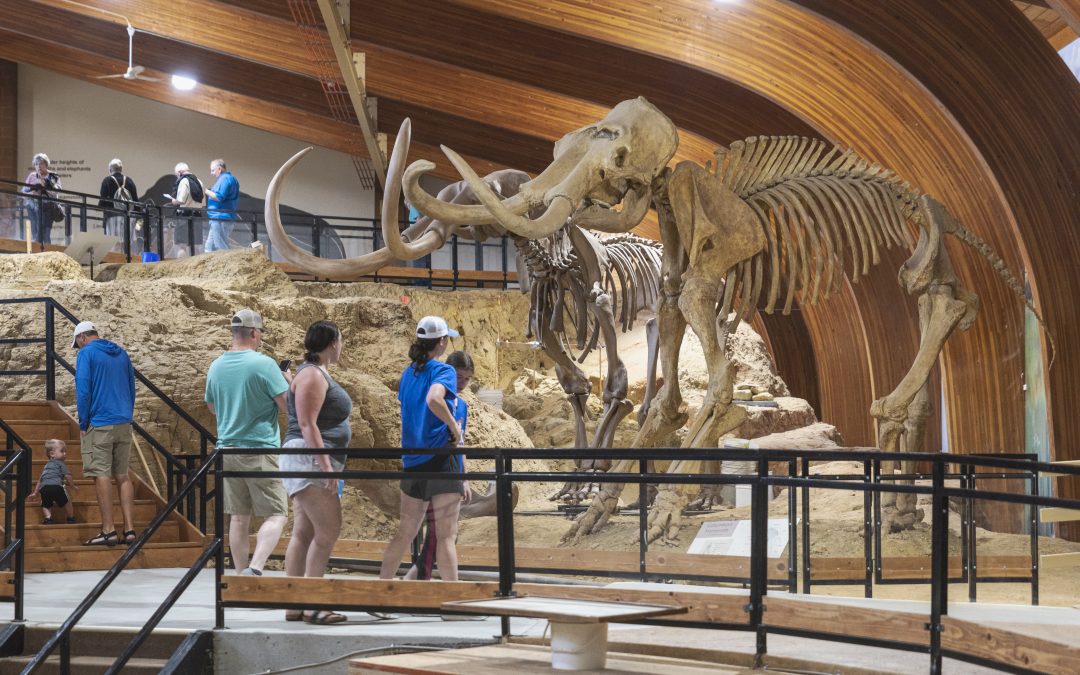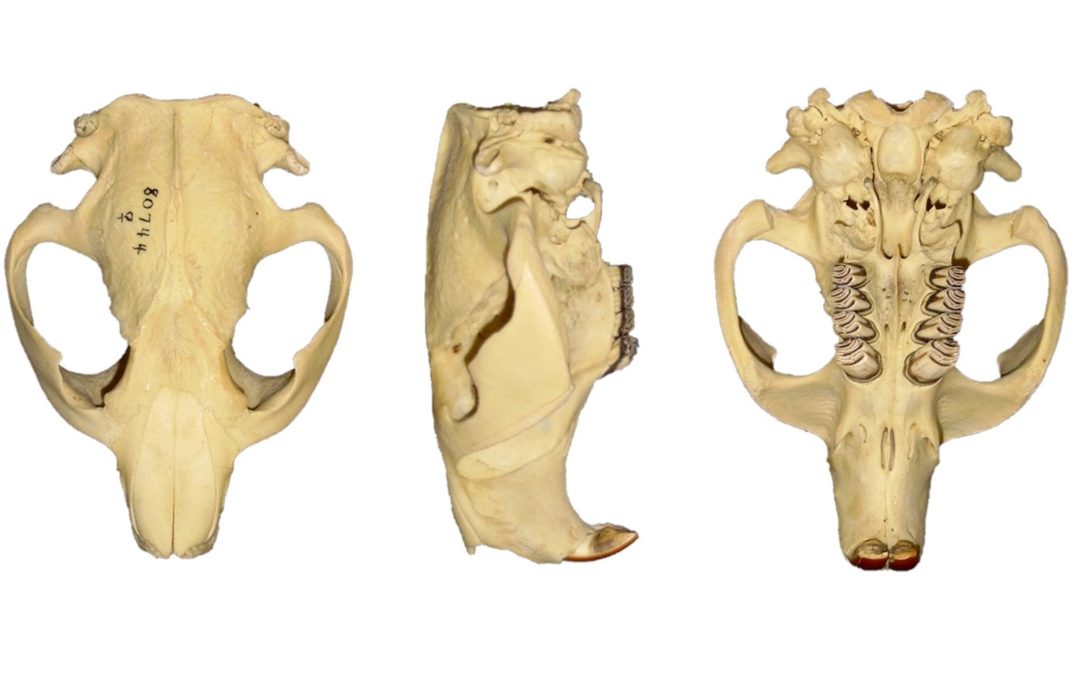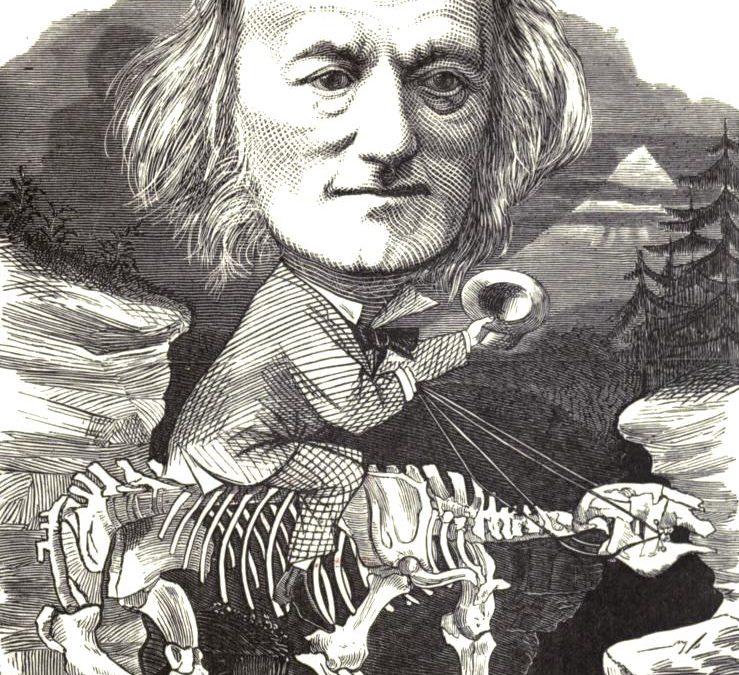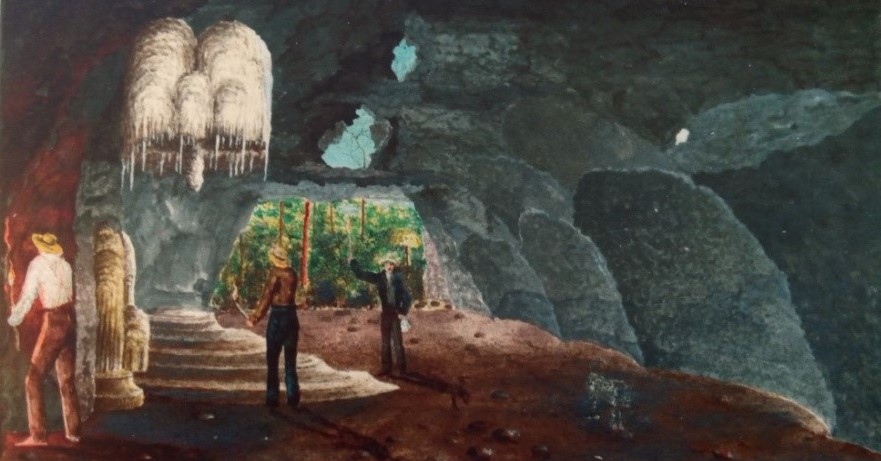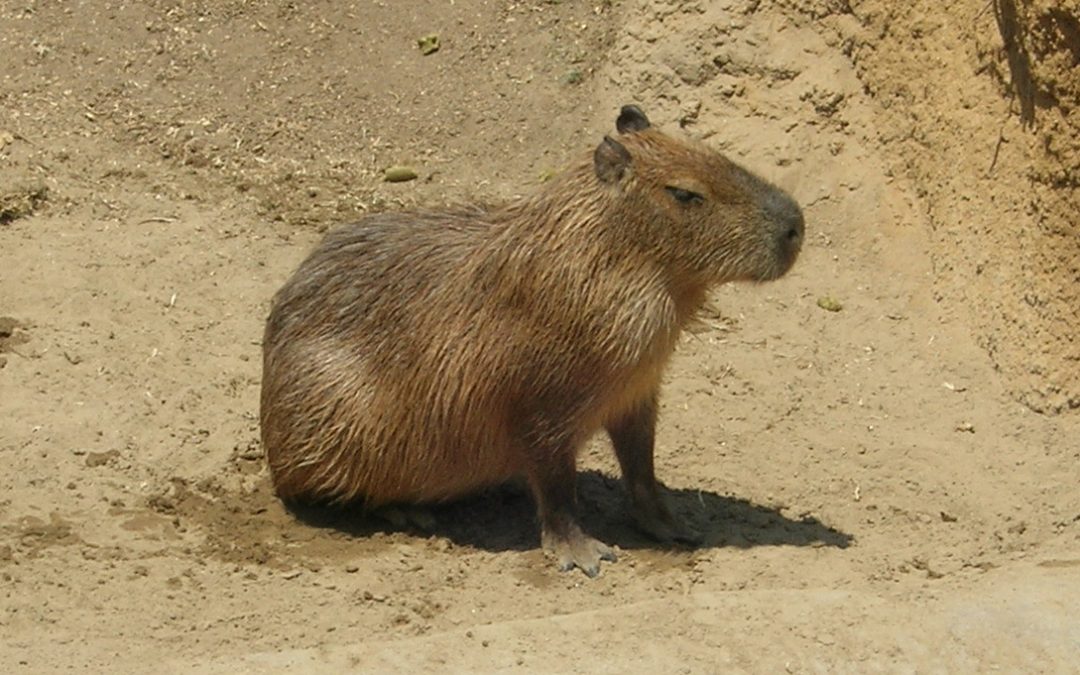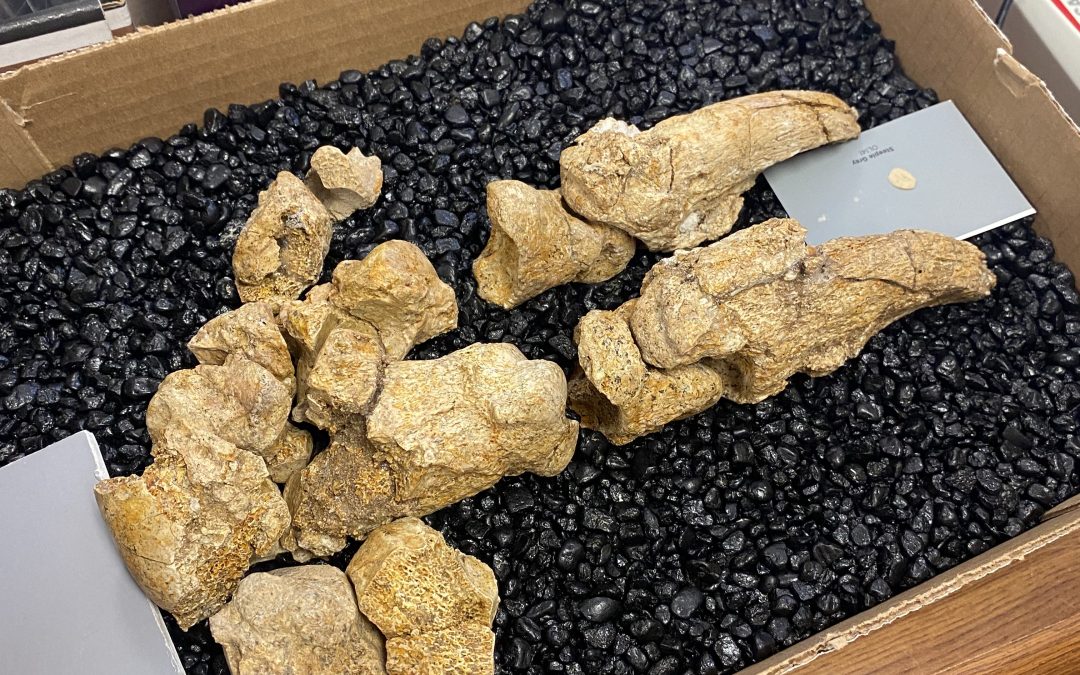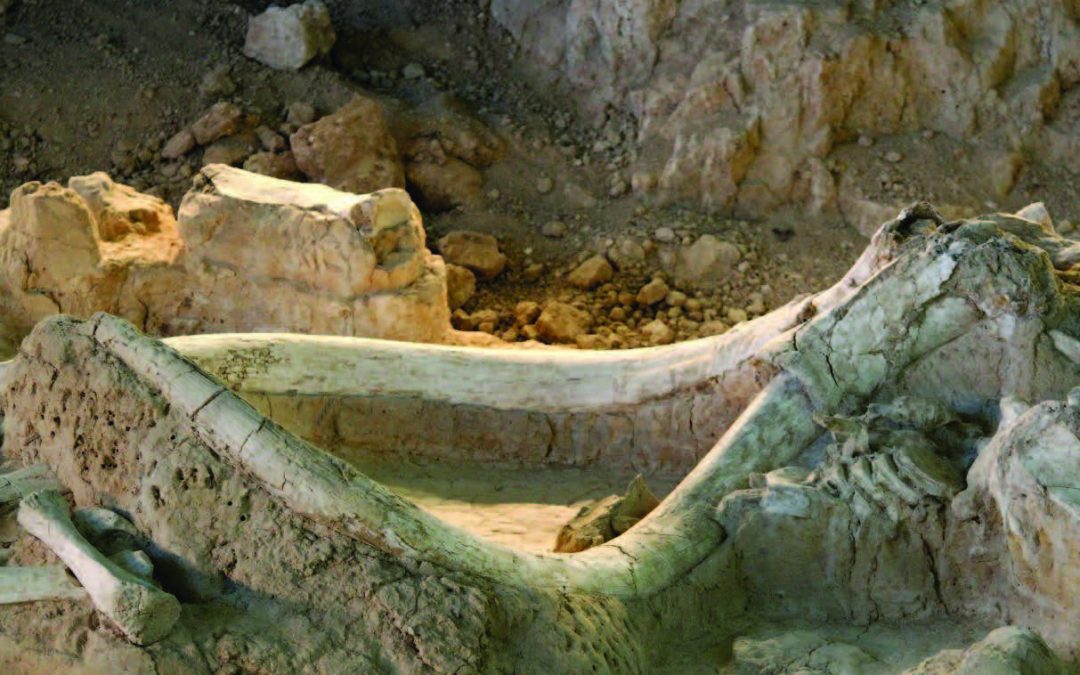
It was not long after Cuvier described the first fossil sloth, Megatherium, in 1796 that additional discoveries of fossil sloths were made. The next prominent discovery was not in South America as might be expected but instead in North America. The discovery of this new sloth was not the result of a planned scientific expedition but rather was incidental to a commercial operation, saltpeter mining. Many caves within the Appalachian Mountains of eastern North America are a significant source of saltpeter (potassium nitrate) which, when mixed in proper proportions with sulfur and charcoal, forms gunpowder. Interest in saltpeter caves goes back to the Revolutionary War, as it allowed the colonists to obtain their supply of this mineral despite blockades by the British. Even later during the Civil War, the Confederacy mined saltpeter from caves to provide themselves with a secure source to manufacture gunpowder. The excavated cave earth was placed in large wooden hoppers, or vats, into which water was poured and the mixture was allowed to stand for several days. The water solution of nitrates was then boiled in large cast-iron kettles to extract the mineral. Wood ash was added to the calcium nitrate to convert it into potassium nitrate for gunpowder.
John Stuart (1749-1823), who lived in Greenbrier County, Virginia (now West Virginia), had purchased such a cave not far from his house to extract the saltpeter. During the mining of the cave earth, his workmen found some large fossil bones. Knowing of his interest in natural history, Stuart sent the bones to his friend Thomas Jefferson who, after receiving them, replied to Stuart on May 26, 1796.
Thomas Jefferson wrote, “I consider those bones as a great acquisition, and shall make a point of communicating the discovery and description of them to the learned on both sides of the Atlantic. I only defer [doing so] till I learn whether a hope exists of finding any other of the bones, as I would wish that the first information should be exact and as complete as possible. Has there ever been any other remains of this species found any where? I must look to you, Sir, to complete the knowledge of this animal for us as you have begun it, by giving me all the further information you can, and sending what other bones can be got of it, and to be so good as to inform me by letter whether anything more may be expected, that I may decide whether I ought to delay giving an account of it.”
Jefferson’s positive reply to Stuart’s gift is not surprising given Jefferson’s long-time interest in the remains of fossil vertebrates and his recognition of the need to better understand the nature of these animals, their relationship to each other and the modern fauna, and the question as to whether they were still alive or extinct. He realized these questions could only be answered by the recovery of more specimens. This is demonstrated by Jefferson’s support of Charles Willson Peale’s (1741-1827) excavation of a mastodon discovered in 1799 in Newburgh, Orange County, New York. He also sponsored excavations at Big Bone Lick, Kentucky, the birthplace of American vertebrate paleontology by William Clark (1770 – 1838) of Lewis and Clark expedition fame in 1807. Clark was directed by Jefferson to collect specimens of the huge bones reported from Big Bone Lick and to acquire duplicates so Jefferson could provide other scientific institutions with examples. Clark did not recover any sloth from his excavations, but rather mostly bones of mastodon, a contemporary of sloths in other regions during the Pleistocene.
In Jefferson’s reply to Stuart, he made a point of indicating he would be communicating the discovery and providing a description of bones. Jefferson intended to deposit the bones with the American Philosophical Society in Philadelphia, the leading academic professional society in the United States at the time, and notified the Society of this intent as early as July 1796. The planned manuscript was scheduled for inclusion in volume 4 of the Transactions of the American Philosophical Society. The bones recovered from the saltpeter cave were assembled and shipped to Jefferson by Stuart towards the end of the summer of 1796 and consisted of at least ten skeletal remains comprising one largely incomplete long limb bone, two nearly complete long limb bones (ulna and radius of the upper arm), and at least seven bones of the hand, most of which were essentially complete. Jefferson also obtained a single claw bone that a Mr. Hopkins had taken from the cave, giving the Society a total of eleven bones. Consequently, Jefferson wrote to Benjamin Rush, vice-president of the Society, on January 22, 1797, that he would deliver what bones he had in hand along with his manuscript early in March.
Jefferson arrived in Philadelphia on March 2, with the bones and his manuscript, in time to attend a regular meeting of the American Philosophical Society the next day. At this meeting, he was inaugurated as the third President of the Society, an office which he held for 17 years. On March 10, Jefferson, as the new President of the Society, presented the bones to the Society. Also at this meeting, Jefferson’s report was read by Jonathan Williams, one of the secretaries of the Society. In his report, Jefferson proposed the animal’s name as Megalonyx, meaning ‘great claw’ in reference to the animal’s large claws.
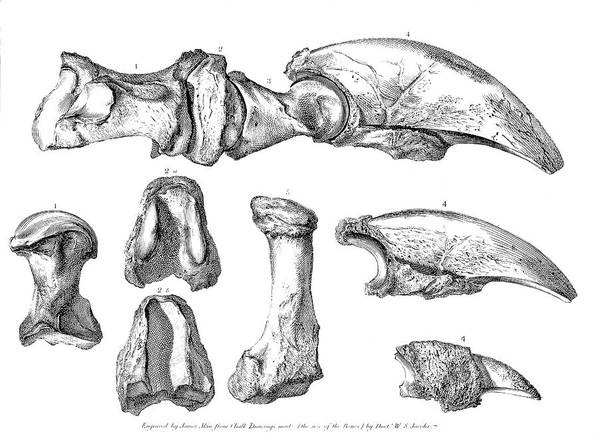
Accordingly, Jefferson made extensive changes to his original manuscript. While talented in many fields, it is safe to say that Jefferson had no formal training or experience as an anatomist or paleontologist. While Jefferson coined the name Megalonyx and provided the background information on its discovery and some interpretation as to its natural history, what is often overlooked is the companion paper written by Caspar Wistar (1761 – 1818), at that time the leading anatomist in the United States. Wistar provided formal descriptions of the bones of the Megalonyx, including making comparisons with the bones of the living three-toed sloth, Bradypus. Wistar’s companion paper to Jefferson’s was not delivered to the editor of the Transactions until March 1, 1799. As the discovery of the Megalonyx occurred in 1796, the same year Cuvier described the Megatherium, had there not been the delays by Jefferson and Wistar in submitting their manuscripts, the bones from the saltpeter cave, which also turned out to be from a sloth, could have possibly been the first fossil sloth to be described rather than second.
Even though Jefferson coined the name Megalonyx, he did not propose a species name, so technically he did not create a formal binomial as required in the Linnean system. This was rather common in the early days of the Linnean system before the formal creation of rules in the International Code of Zoological Nomenclature that we use today. Today, we use the name Megalonyx jeffersonii. This binomial name for the sloth came about in 1822 with the French naturalist, Anselme-Gaëtan Desmarest (1784 – 1838). Desmarest proposed that Jefferson’s Megalonyx was just another species of Cuvier’s Megatherium, so coined the name “Esp. Mégathère de Jefferson, Megatherium Jeffersonii” to distinguish the two species of Megatherium. It should be noted that he used the name Megatherium cuvieri for Cuvier’s specimen, ignoring that Cuvier had already given it a formal binomial name, Megatherium americanum. The removal of Megalonyx as a formal name did not last long. In 1825, the North American naturalist Richard Harlan (1796 – 1843) in his book, Fauna Americana; being a Description of the Mammiferous Animals inhabiting North America (the first compendium of all the North American mammals both living and extinct), included Megalonyx jeffersonii. This was the first time this name combination was used.
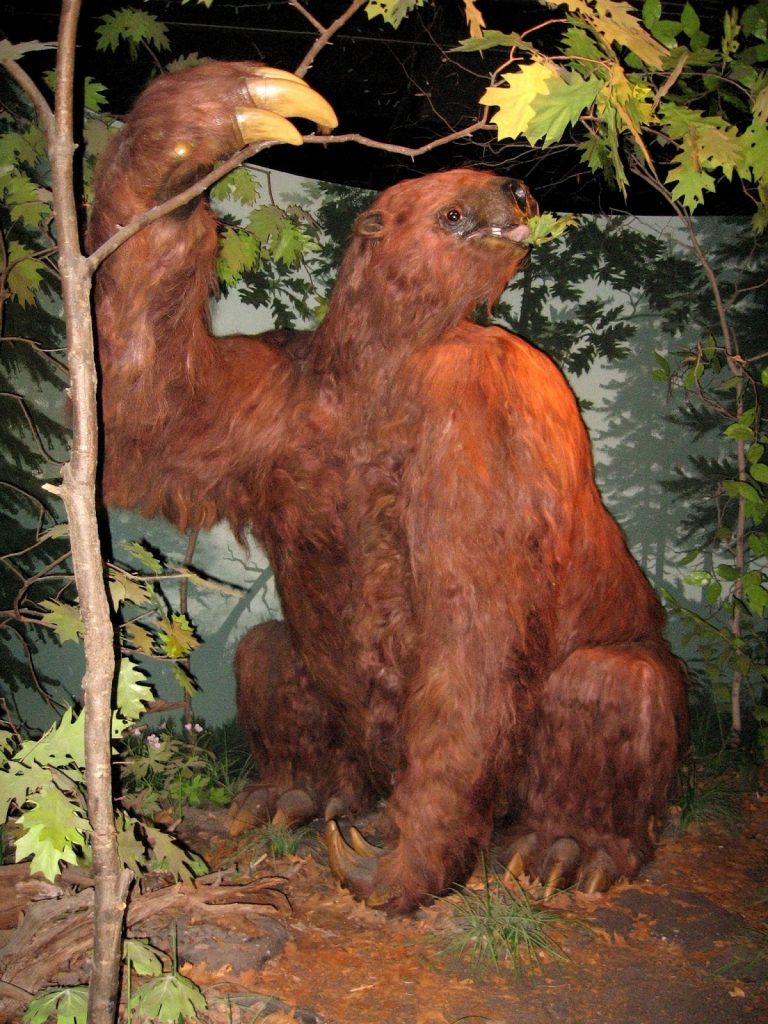
While derived from a South American ancestor which dispersed into North America long ago, Megalonyx has the distinction of being a strictly North American sloth with no representatives in the Southern Hemisphere. Since its original discovery in what is now West Virginia, there are records from coast to coast, and from as far north as Alaska and the Yukon south into Mexico. While its remains are commonly found in caves, it is one of the best-known sloths in North America. This large sloth has been found in many other contexts such as peat bogs and the La Brea tar pits in Los Angeles. Megalonyx has a long evolutionary history, with the oldest record at around 5 million years ago. In addition to Megalonyx jeffersonii, which lived in the late Pleistocene, other earlier species can be distinguished by changes in their morphology as they evolved. Not a bad record for being the second extinct sloth to be described.

